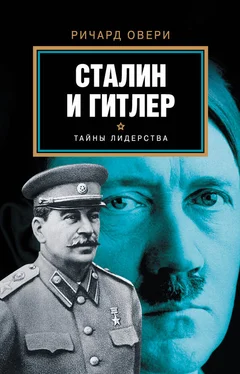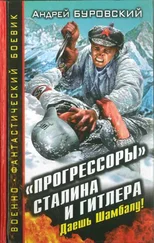59. BA-B R11/77 Reichswirtschaftskammer, economic situation reports. The chamber produced composite quarterly reports, and regular digests of the economic group reports organized into sections on labour, raw materials, industry, wages and prices, trade, etc.
60. On ‘primacy of politics’ F. Marx Government in the Third Reich (New York, 1936), p. 150; telephone tapping in H. B. Gisevius To the Bitter End (London, 1948), pp. 200–201; on Bremen speech H. Heiber (ed.) Reichsführer! Briefe an und von Himmler (Stuttgart, 1968), p. 44, Aktennotiz 1 May 1936.
61. W. Treue ‘Hitlers Denkschrift zum Vier jahresplan 1936’, Vierteljahrshefte für Zeitgeschichte, 3 (1955), p. 206.
62. Imperial War Museum, London, FO 645, Box 156, Goring interrogation, 17 October 1945, p. 8. 63. Berndt, Gebt mir vier Jahre Zeit, p. 211; P. Schmidt Deutsche Wirtschafts-freheit durch den Vier jahresplan (Breslau, n.d.), pp. 2–8; G. Thomas Geschichte der deutschen Wehr-und Rüstungswirtschaft 1918–1943/5 ed. W. Birkenfeld (Boppard am
Rhein, 1966), p. 111.
64. ‘Niederschrift über die Sitzung des Ministerrats 4 September 1936’, in H. Michaelis and E. Schraepler (eds) Ursachen und Folgung vom deutschen Zusammenbruch 1918 bis 1945 (Berlin, 1968), vol. x, p. 545.
65. M. Domarus Hitler: Speeches and Proclamations (4 vols., Wauconda, Ill., 1990–2004), vol. ii, p. 853.
66. BA-B R26/II Anh/2 W. Rentrop, ‘Materialen zur Geschichte des Reichskommissars für die Preisbildung’, pp. 8–13.
67. Der Vierjahresplan i (1937), p. 277.
68. BA-B R26/II Anh/i H. Dichgans ‘Zur Geschichte des Reichskommissars für Preisbildung’ n.d., pp. 4–6, 9–11.
69. Davies, Harrison and Wheatcroft, Economic Transformation, p. 313; M. Dohan ‘Foreign Trade’, in Davies, Tsarism to the New Economic Policy, pp. 224–33, 326–7; W. Beitel and J. Nötzold Deutsch-sowjetische Wirtschaftsbeziehungen in der Zeit der Weimarer Republik (Baden-Baden, 1979), p. 206.
70. Beitel and Nötzold, Deutsch-sowjetische Wirtschaftsbeziehungen, p. 217.
71. L. Prager Nationalsozialismus gegen Liberalis mus (Munich, 1933), p. 3. On autarky in Germany see D. Petzina Autarkiepolitik im Dritten Reich (Stuttgart, 1968); A. Teichert Autarkie und Grosswirtschaftsraum in Deutschland 1930–1939 (Munich, 1984). For a contemporary analysis H. Kremmler Autarkie in der organischen Wirtschaft (Dresden, 1940).
72. R. W. Davies and O. K. Khlevniuk ‘Gosplan’, in E.A. Rees (ed.) Decision-Making in the Stalinist Command Economy, 1932–37 (London, 1997), p. 34.
73. L. E. Hubbard Soviet Money and Finance (London, 1936), pp. 290–96; Baykov, Soviet Economic System, pp. 264–72. In general on Soviet autarky M. R. Dohan The Economic Origins of Soviet Autarky 1927/28–1934’, Slavic Review, 35 (1976), pp. 603–35.
74. Calculated from Davies, Harrison and Wheatcroft, Economic Transformation, pp. 272, 312.
75. K. E. Bailes The American Connection: Ideology and the Transfer of American Technology to the Soviet Union, 1917–1941’, Comparative Studies in Society and History, 23 (1981), pp. 443–8.
76. Beitel and Nötzold, Deutsch-sowjetische Wirtschaftsbeziehungen, pp. 208, 210, 217.
77. E. von Mickwitz (ed.) Aussenhandel unter Zwang (Hamburg, 1938), pp. 5, 41; on Hitler’s conversion to autarky E. Syring Hitler: seine politische Utopie (Frankfurt am Main, 1994), pp. 173–4.
78. See in general S. Lurie Private Investment in a Controlled Economy: Germany 1933–1939 (London, 1947); N. Forbes ‘London Banks, the German Standstill Agreement and Economic Appeasement in the 1930s’, Economic History Review, 40 (1987).
79. On the control offi ces BA-B R3101/8445 Economics Ministry ‘Bekanntmachung über die Reichsstellen zur Überwachung und
Regelung des Warenverkehrs’; on the operation of the system G. R. von Radiis Die deutsche Aussenhandelspolitik unter dem Einfl uss der Devisenbewirtschaftung con 1931 bis 1938 (Vienna, 1939). See too W. A. Boelcke Deutschland als Welthandelsmacht 1930–1945 (Stuttgart, 1994), pp. 13–43.
80. Petzina, Autarkiepolitik, p. 95.
81. L. Zumpe Wirtschaft und Staat in Deutschland 1933 bis 1945 (Berlin, 1979), p. 221; H.-E. Volkmann ‘Die NS-Wirtschaft in Vorbereitung des Krieges’, in W. Deist et ah (eds) Das Deutsche Reich und der Zweite Weltkrieg: Band I (Stuttgart, 1979), p. 262.; W. Jungermann and H. Krafft Roh stoffreich – turn aus deutscher Erde (Berlin, 1939), p. 69 on oil.
82. Details in R. J. Overy ‘The Four Year Plan’, in T. Gourvish (ed.) European Yearbook of Business History: Number 3 (Aldershot, 2000), pp. 101–2.
83. R. W. Davies and M. Harrison ‘Defence spending and defence industry in the 1930s’, in J. Barber and M. Harrison (eds) The Soviet Defence-Industry Complex from Stalin to Khrushchev (London, 2000), p. 73; German fi gures in National Archives, Microcopy T178, Roll 15, Reich fi nance ministry ‘Statistische Übersichten zu den Reichshaushaltsrechnungen 1938 bis 1943’, November 1944.
84. IWM FD 3056/49 ‘Statistical Material on the German Manpower Position during the war period 1939–1944’, 31 July 1945, table 7.
85. B. H. Klein Germany’s Economic Preparations for War (Cambridge, Mass., 1959), p. 14; Davies and Harrison, ‘Defence spending’, pp. 87–8.
86. J. Sapir Les fl uctuations economiques en URSS 1941–1945 (Paris, 1989), p. 47.
87. N. Simonov ‘The “war scare” of 1927 and the birth of the defence-industry complex’, in Barber and Harrison, Soviet Defence-Industry Complex, p. 44.
88. In May 1939 1 in 8 German workers in the consumer industries worked directly on military orders. See R. J. Overy War and Economy in the Third Reich (Oxford, 1994), pp. 27–9 on the conversion of consumer sectors.
89. United States Strategic Bombing Survey, Report 20 ‘Light Metal Industry in Germany’, Part I Aluminium, p. 2.
90. BA-B Reichsamt für Wirtschaftsausbau, New Production Plan, 12 July 1938, ‘Finanzbedarf der Projekte des Vierjahresplan’.
91. R. J. Overy ‘The Reichs werke Hermann Goring: a Study in German Economic Imperialism’, in Overy, War and Economy, pp. 144–74.
92. This excludes investment in areas such as the railways, whose overhaul in the late 1930s also had a strategic purpose; so too the expansion of basic electric power.
93. This view was formulated in United States Strategic Bombing Survey Overall Report, September 1945, p. 31: The Germans did not plan, nor were they prepared for, a long war’. See too N. Kaldor ‘The German War Economy’, Review of Economic Statistics,
13 (1946); A. S. Milward ‘Hitlers Konzept des Blitzkrieges’, in A. Hillgruber (ed.) Probleme des Zweiten Weltkrieges (Cologne, 1967), pp. 19–40.
94. For a survey of all these preparations see BA-B R26 I/18 ‘Ergebnisse der Vier jahresplan-Arbeit’, spring 1942, pp. 5–95. ‘He [Hitler] gave economic policy the task of making the economy ready for war in the space of four years…’ (p. 1).
95. Akten zur deutschen auswärtigen Politik Ser. D., vol. i (Baden-Baden, 1950), p. 27, ‘Niederschrift über die Besprechung in der Reichskanzlei’, 5 November 1937.
96. Overy, War and Economy, pp. 148–59.
97. BA-B R26IV/4 ‘Besprechung über die Eingliederung Sudetendeutschlands in die reichsdeutsche Wirtschaft’, 3 October 1938.
98. IWM, EDS AL/1571 Thomas minute, 20 June 1940.
99. BA-B R2501/6585, Reichsbank memorandum 24 August 1939, appdx 1.
100. P. Temin ‘Soviet and Nazi economic planning in the 1930s’, Economic History Review, 44 (1991), p. 585.
101. H. von Kotze and H. Krausnick (eds) ‘Es spricht der Führer’: 7 exemplarische Hitler-Reden (Gütersloh, 1966), pp. 176–7, speech of 24 Febuary 1937 to construction workers.
102. IWM Case XI Pros. Doc. Book 112, Neumann lecture The Four Year Plan’, 29 April 1941, p. 294.
Читать дальше
Конец ознакомительного отрывка
Купить книгу








